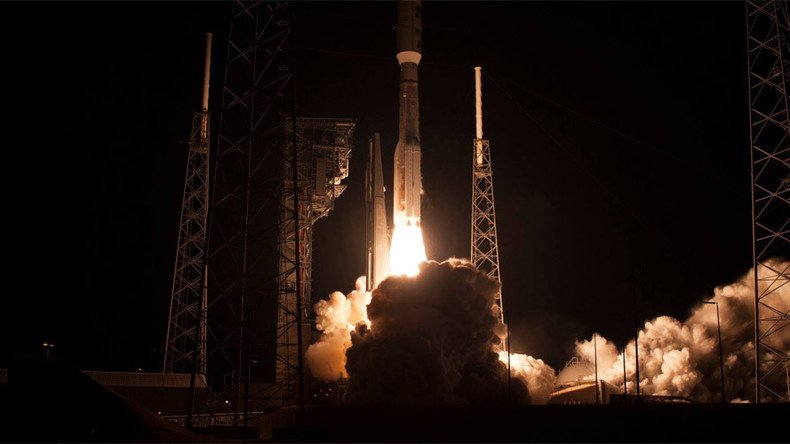NASA launches highly-advanced weather satellite, claims it could save lives

NASA has successfully launched a new satellite for the National Oceanic and Atmospheric Administration (NOAA) in the first of a series of highly-advanced weather satellites that will revolutionize weather forecasting – and save lives in the process.
The Geostationary Operational Environmental Satellite-R (GOES-R) blasted off on Saturday and its function will be to boost weather observation capabilities, which will help provide more accurate forecasts and weather warnings.
"We have lift off!" NOAA'S GOES-R Satellite Heads to Orbit https://t.co/qKXExWbgdIpic.twitter.com/jRTbx5F0P5
— NOAA Satellites (@NOAASatellites) November 20, 2016
Thomas Zurbuchen, the associate administrator for NASA’s Science Mission Directorate in Washington, said the satellite launch was a “major step forward” for advancing weather observation.
READ MORE: Mysterious ‘sphere’ spotted in NASA’s Sun images not so bizarre after all (VIDEO)
“The launch of GOES-R represents a major step forward in terms of our ability to provide more timely and accurate information that is critical for life-saving weather forecasts and warnings,” Zurbuchen said.
GOES-R will be renamed as GOES-16 once it reaches its final designated orbit in two weeks and will become fully operational within 12 months after a check over is carried out of the satellite’s six new instruments, which include the first operational lightning mapper in geostationary orbit.
#GOESR has successfully separated from the upper stage and is now flying free for the first time! pic.twitter.com/NnhWY64gGZ
— NOAA Satellites (@NOAASatellites) November 20, 2016
It is the lightning mapper that will help forecasters track storms representing the greatest threats. The latest space weather sensors will also collect critical information about the sun which will be relayed back to forecasters in order for space weather alerts and warnings to be issued.
NOAA administrator Kathryn Sullivan also praised the project.
Good luck GOES-R!! A live look at #GOESR as it heads off into space to start its mission. https://t.co/wEkZBRWnIjpic.twitter.com/PLVU4I10hw
— NOAA Satellites (@NOAASatellites) November 20, 2016
“The next generation of weather satellites is finally here,” she said. “GOES-R will strengthen NOAA’s ability to issue life-saving forecasts and warnings and make the United States an even stronger, more resilient weather-ready nation.”
A total of four satellites are in the GOES=R series and will extend to NOAA’s geostationary coverage over the next 20 years.
READ MORE: NASA's most advanced telescope complete after 20 years (PHOTO)












